The “Modify an Account” function can be very useful whenever you want to make changes to an existing account. The most common changes you are likely to make are in regards to the primary domain or to the Disk Space usage of the account as everything else is quite situational and depends on your personal preferences. It has quite a few options, especially towards the resource limits, so let’s get right into it!
First, you need to log into the WHM service for your VPS or Dedicated Server. If you are not sure how to do that, please check our How to Access WHM tutorial. After you have logged in, please use the search bar on the left side of the page and type “Modify an Account”.
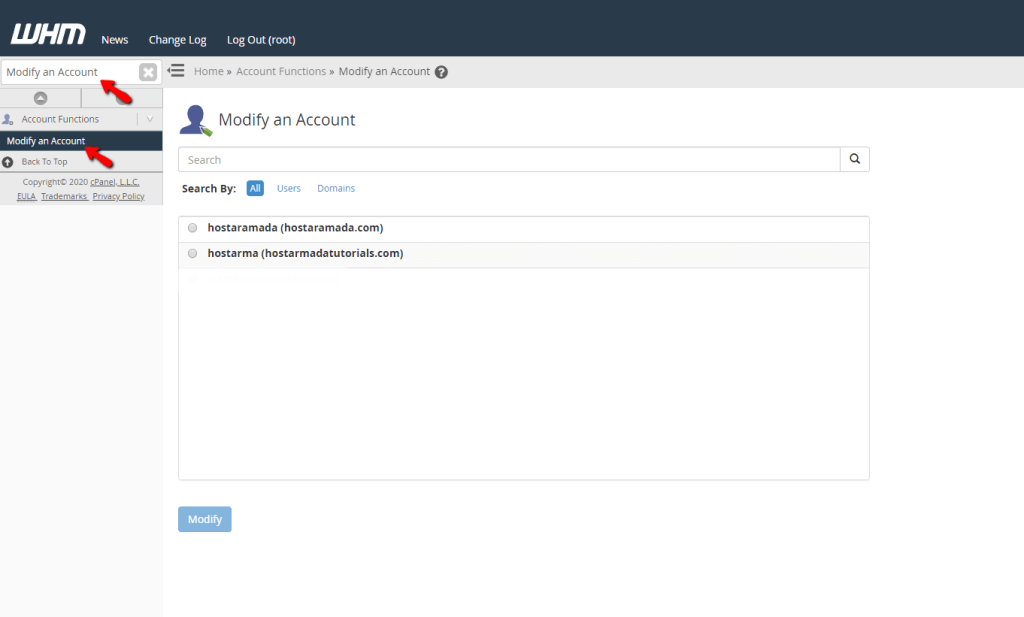
WHM will present you with a single result which after you click on, you will be redirected to the “Modify an Account” page. When you land there, you will see two things - a search bar and a list of users. The search bar can filter the accounts by users, domains, and both.
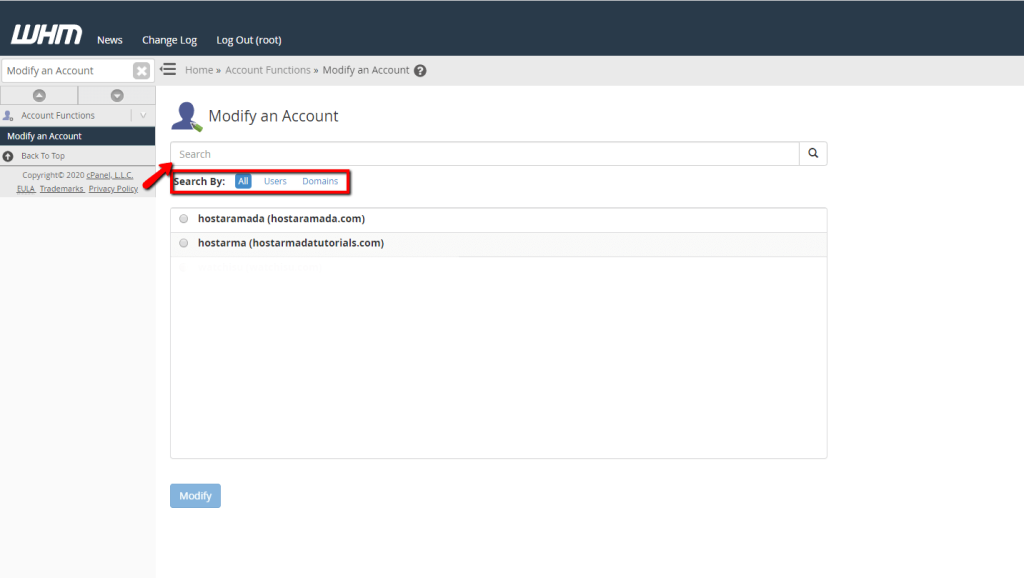
When you locate the account you want to edit, please select it by clicking on the radio button positioned before the username of the account and then press the modify button at the bottom of the page.
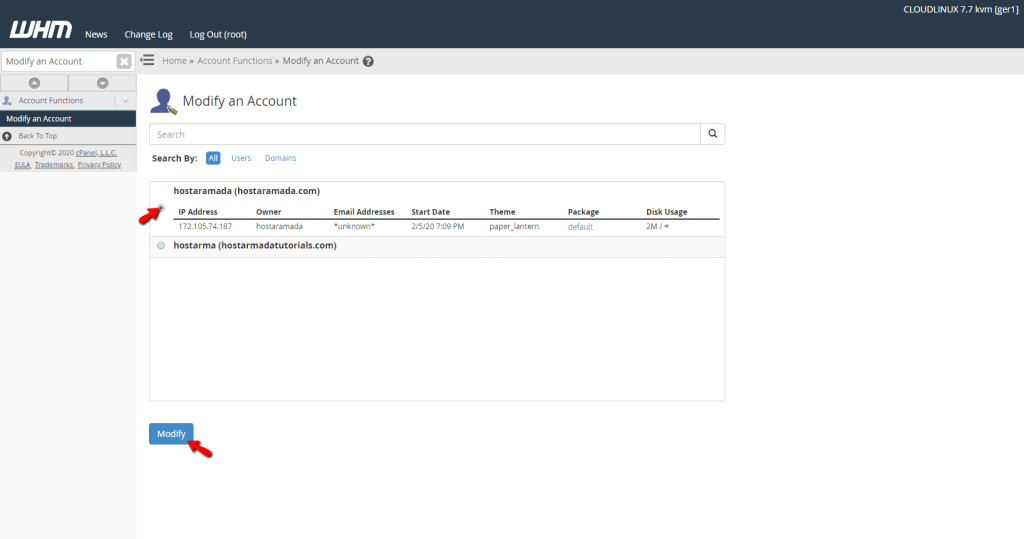
This will open the modification page, which has quite a few options that we will be discussing in the next paragraphs of this tutorial.
The first thing you will notice is the “Basic Information” section. The changes you can make there are as follows:
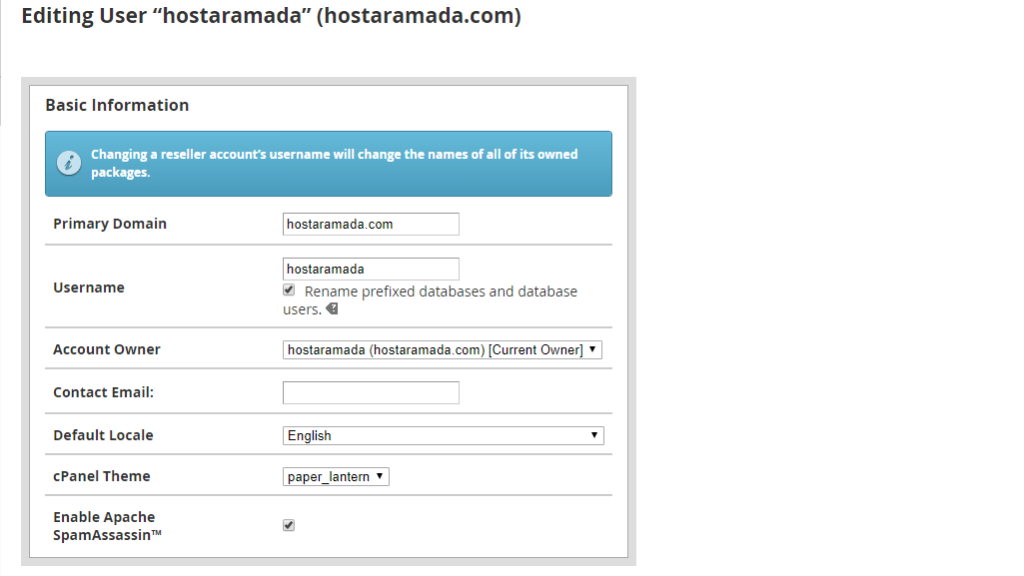
The second section is called “Resource Limits”. You have a lot of options here that can be manually changed, or you could simply select a package that has preset resources just so you can apply those immediately to the edited cPanel account. We will be looking at the packages in a separate tutorial but keep this in mind.
To change the value for each of the options in this section you will have to click on the radio button that enables the customization of the value. Once that is done, the grayed-out text box will be activated and you will be able to type the desired number.
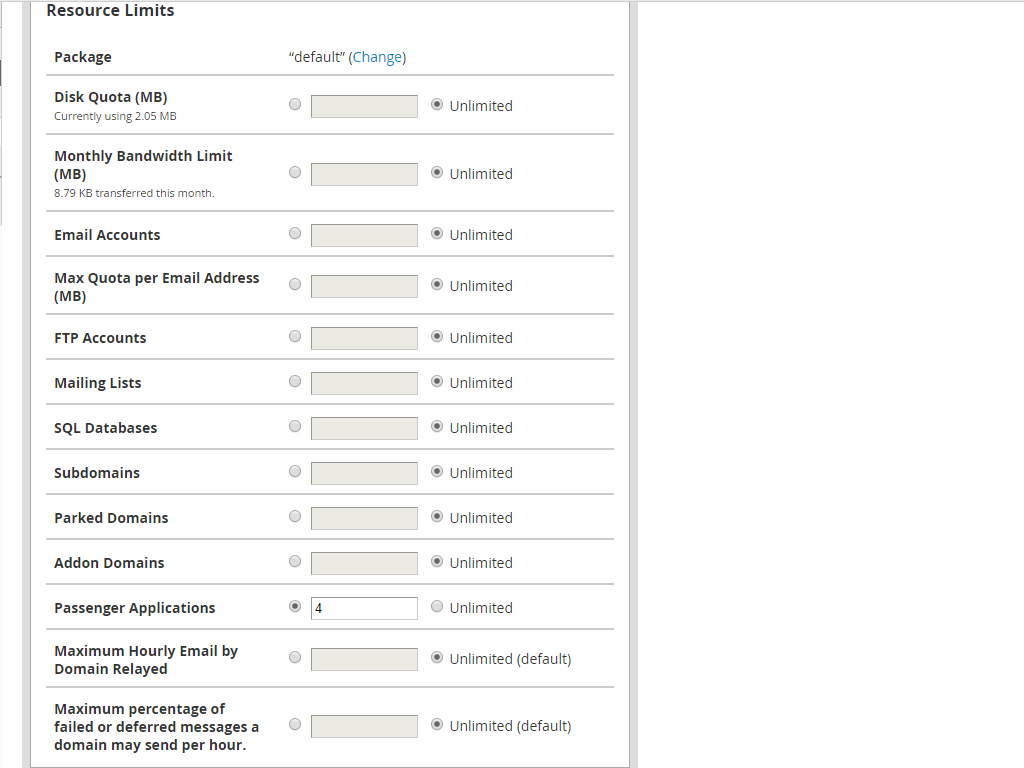
The third section will allow you to edit the Privileges of the account.
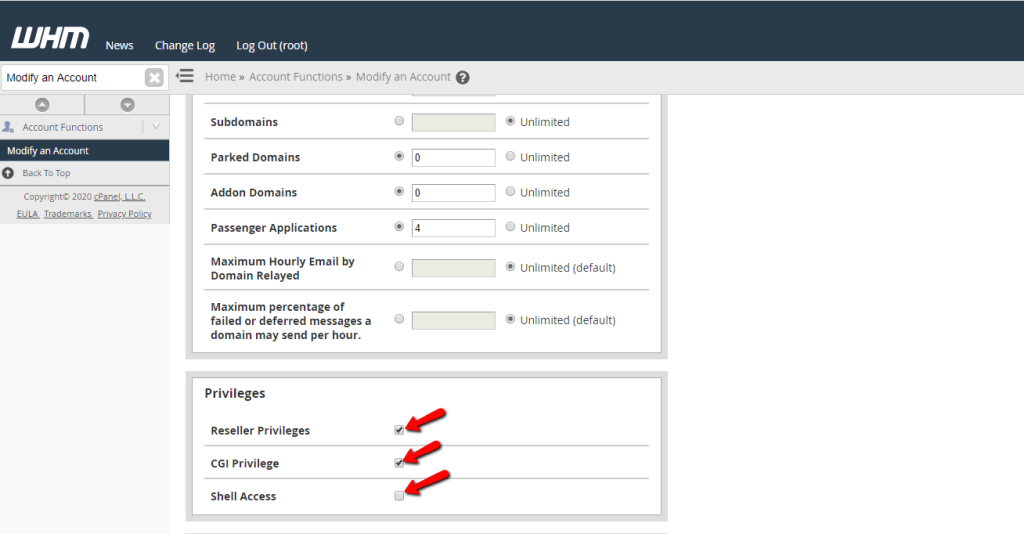
The last section will allow you to make DNS changes.
One important thing you need to be aware of is that if you select either of these checkboxes, each existing SPF OR DKIM record will be deleted from the account and replaced with the default ones for the server.
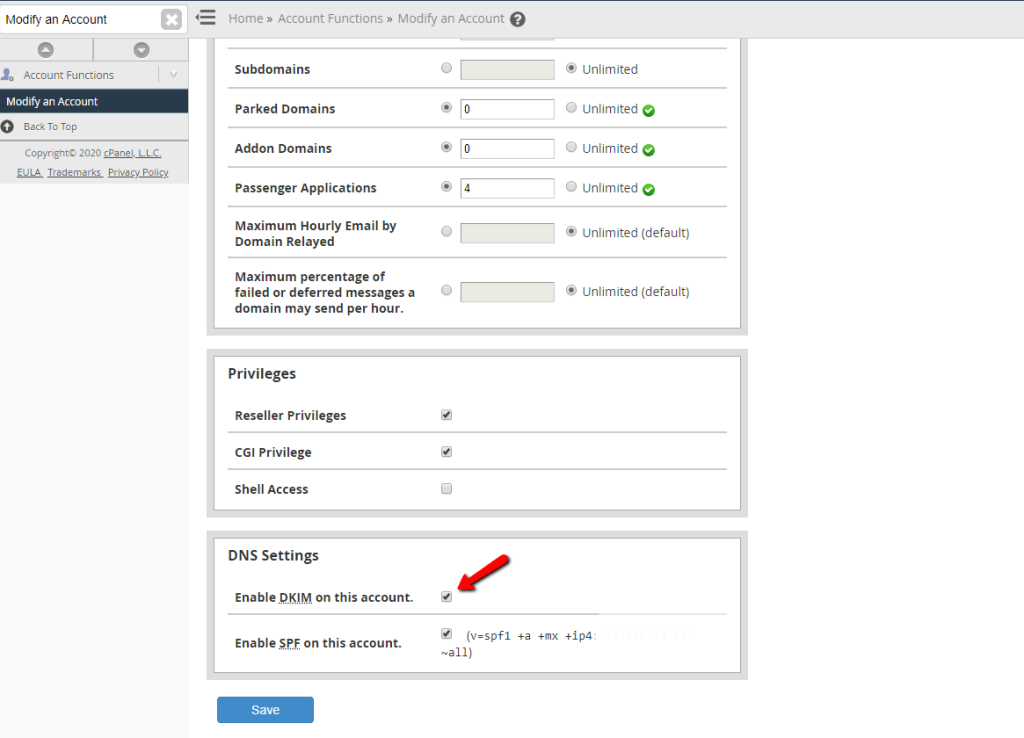
Finally, when you are done with all the modifications, you can click the “Save” button located at the bottom of the page. If the package you have chosen is set to the default one or if the package you have assigned has similar to the configured values, the changes will be applied immediately.

Otherwise, the “Package Conflict Resolution” window will appear if you attempt to save settings that do not match the account’s assigned package. If that dialog box appears, select the desired option and then click Proceed. You can choose one of the following:

That’s it! We have gone through all there is to learn about the “Modify an Account” feature in the WHM control panel. If you have any doubts or questions about any of this, please feel free to reach our Technical Support Crew, as they will be delighted to help you out as best as they can.

Sebahat is a young and bright woman who has become an invaluable part of our team. She started as a Customer Care Representative, mastering that role and, along the way, growing into a tech-savvy individual who is well acquainted with every support layer of the company. Driven by her aim to improve our customers’ experience constantly, she is committed to enhancing the extraordinary support we deliver.